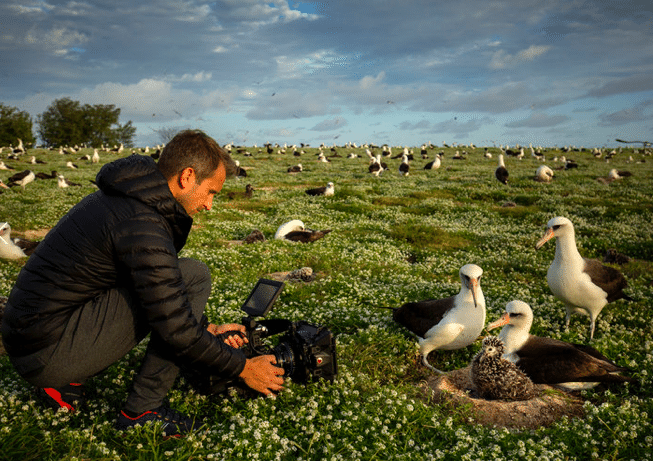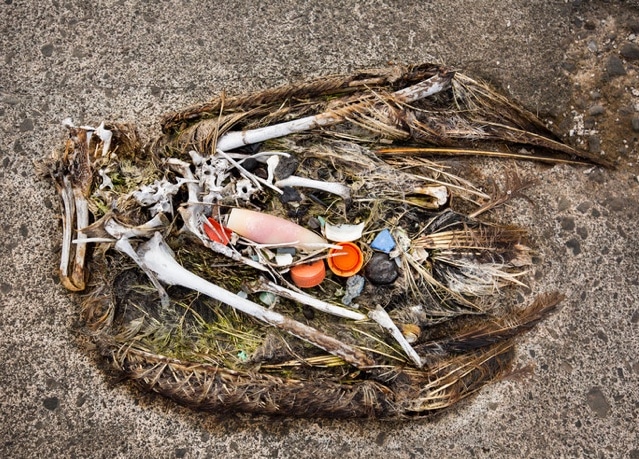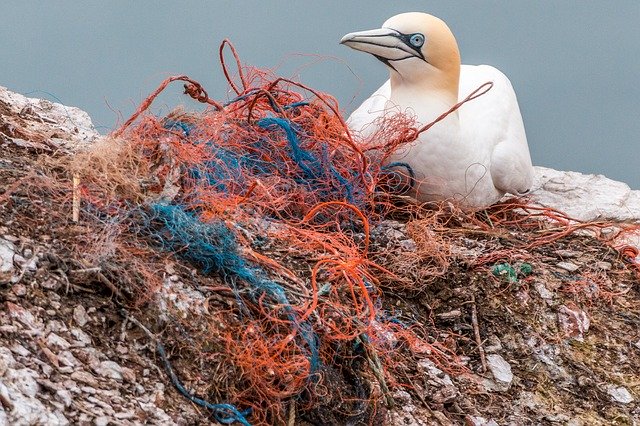How Much Plastic Pollutes Our Ocean Environment
Every year, an estimated 8 million tons of plastic goes into our oceans. That’s an awful statistic, but it’s legacy is even worse. Each year the scope of the problem grows with more plastic accumulating.
This plastic doesn’t disappear. Over time the plastic breaks up into tiny particles which can float in the ocean for many years. These plastic particles endanger marine life and often end up in either the wildlife or human food chain. The alarm has been sounded and many groups are seeking solutions to the problem.


The Albatross is one of the most prominent sea birds nesting on Midway. Made famous in The Rime of the Ancient Mariner by Samuel Taylor Coleridge, the Albatross has long held a special place in nautical lore and history.
How Growing Plastic Pollution is Destroying Our Oceans
A recent study, published in Current Biology found that less than 13% of the world’s oceans are not adversely affected by plastic pollution. The study found that the only unaffected global waters are found in remote parts of the Pacific Ocean and around the poles.
However, even these remote areas waters are becoming unsafe from plastic pollution endangering marine wildlife. Located just 1300 miles from Honolulu, Midway Atoll is a primary nesting place for many sea birds.
How the Albatross is Our Canary in the Coal Mine
Albatrosses are incredible birds. They are able to soar over vast distances because of their 6 foot wingspan. Mating for life they only return to land to nest and hatch their young.
Plastics dumped in our oceans have created a huge problem for the albatross. Many birds accidentally eat plastic debris floating in the ocean. They often mistake it for food. The problem is intensified in albatrosses because of how they catch the fish, squid and other sealife that makes up their diet.

Albatrosses skim the surface of the water with their beak. While gathering food, they accidentally pick up floating plastic. When they feed their chicks, the chicks get plastic along with their food. Adults can regurgitate plastic they’ve swallowed, the chicks can’t, so it fills their stomachs.
The effects of plastic on the chicks hasn’t been scientifically proven. However, it’s probable that it injures or kills the birds by either cutting their stomachs or taking up space and making them feel “full”, when they are actually starving.
Cheap and Effective Ocean Clean-up is Unlikely
The sad fact is that it is unlikely that we can develop a cheap and effective technology to clean the debris from our oceans. The good news is that natural decay over time will clear much of the man made debris. Metal will rust away and wood will gradually disappear. The bad news is that plastics present a unique durability problem which defies the elements.
How Can We Clean Up Our Ocean Plastic Pollution?
Many organizations are working on the problem to clean up our massive ocean plastic pollution problem. From companies like SodaStream to groups like 4ocean, we are designing and deploying the resources and equipment needed to tackle the ocean plastic pollution problem.
However, this massive undertaking needs to be supplemented with genuine efforts to significantly reduce the amount of plastic flowing into our oceans each year. We can’t clean up all the plastic waste in our oceans, however we each need to do whatever we can.
The most important thing we can do is to commit ourselves to reduce, reuse or recycle plastic products if we are unable to completely stop our use of single-use plastic products.
How Can You Curb Your Single-use Plastic Habit?
Calculate Your Carbon Footprint
If you would like to calculate your Carbon Footprint, follow the link to the free carbon footprint calculator of the United States Environmental Protection Agency.








